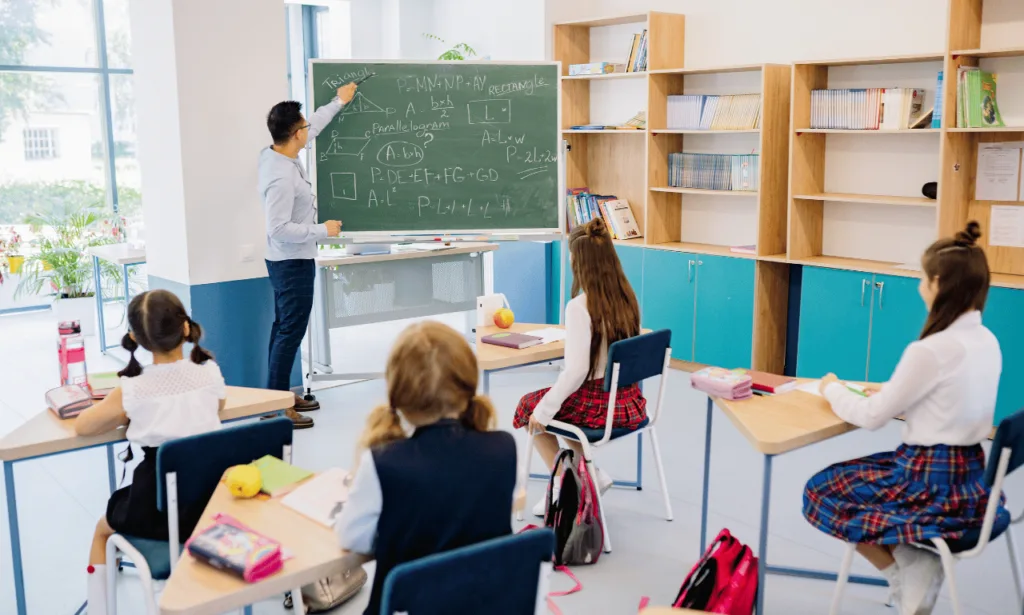Phone:
(+65)8319-0742
Unlocking the full potential of each student is the cornerstone of successful education. With effective instructional scaffolding, educators are equipped with a powerful teaching technique to accompany students on their academic journey. This student-centered approach integrates a dynamic learning framework with tailored educational support to assist learners in mastering complex concepts. Academic scaffolding not only provides step-by-step student guidance, but it also fosters independence, ensuring that students are well prepared for their educational endeavors.
Key Takeaways
- Instructional scaffolding is a dynamic process that adapts to the evolving needs of learners.
- It employs a structured approach, breaking down learning objectives into manageable tasks.
- The strategy supports cognitive development through progressive student guidance.
- Academic scaffolding shifts responsibility from teacher to student, encouraging autonomy.
- Utilizing this technique promotes long-term retention and meaningful student engagement.
- Personalized educational support is at the core of this teaching approach.
Understanding the Foundations of Instructional Scaffolding
The concept of instructional scaffolding is paramount in the realm of education, serving as a supportive structure to facilitate student cognitive development. At its core, the scaffolding philosophy is a testament to the potential that lies within each learner when they are given the right instructional guidance.
The foundations of instructional scaffolding emerged from the innovative work of Jerome Bruner, revolutionizing the educational scaffolding process by emphasizing the importance of supporting learners as they acquire new skills. By bridging the gaps in understanding, scaffolding empowers learners to reach heights previously out of reach, shouldering the journey from nascent concepts to full comprehension.
Origins and Definitions of Scaffolding
Grounded in the principle that learners naturally progress toward stronger understanding and greater independence, instructional scaffolding equips educators with methods to guide this progression effectively. This framework is tightly interwoven with Lev Vygotsky’s concept of the Zone of Proximal Development (ZPD), which delineates the expanse between a learner’s current capability and their potential when assisted by a more knowledgeable other.
Distinguishing Scaffolding from Differentiation
While often mentioned in the same breath, instructional scaffolding is distinct from differentiation. Differentiation tailors the educational experience to students’ individual learning profiles, accommodating diverse abilities and preferences. In contrast, scaffolding provides incremental layers of support, structured on systematic steps toward a universal goal of skills masteryâeach designed to reinforce the ZPD. To elucidate these differences, letâs look at an educational scaffolding process compared to a differentiated approach.
| Scaffolding Approach | Differentiated Approach |
|---|---|
| Leveled support based on current ZPD | Adjusted based on individual learner profiles |
| Support fades as competence grows | Support varies across different learning experiences |
| Goal-oriented towards skill autonomy | Customizes learning objectives and outcomes |
| Sequential steps toward mastery | Multiple pathways to achieve understanding |
| Teacher-directed instructional guidance | Student-centered learning modalities |
When educators grasp the intricate layers of the foundations of instructional scaffolding, they fortify their toolkit to bolster student success and enrich cognitive development.
Exploring the Benefits of Instructional Scaffolding

Delving into the dynamic world of education, we observe that the benefits of instructional scaffolding are multifaceted and deeply impactful. Through meticulously designed educational support systems, instructional scaffolding offers learners the structure they require to attain new heights in their academic journey. But the advantages extend beyond mere content assimilation. Let’s explore the profound ways in which scaffolding enriches the cognitive and personal growth of students.
Long-Term Retention and Cognitive Development
At the intersection of educational theory and practical application, academic scaffolding plays a crucial role in promoting long-term retention and fostering cognitive development. This approach effectively bridges the divide between what students already know and what they can learn with guidance, reinforcing their ability to internalize and recall information. By engaging with concepts at a deeper level, students develop frameworks for understanding that serve them well beyond the classroom walls.
Encouraging Student Autonomy and Engagement
Instructional scaffolding stands out for its ability to cultivate student autonomy. By providing resources and strategies that taper as proficiency grows, learners are empowered to take charge of their own educational journey. This tailored support fosters a sense of ownership and a proactive mindset towards learning. In turn, the scaffolded environment sees a marked increase in student engagement, often translating to an uptick in academic performance. The blend of support with the freedom to explore solidifies student confidence and nurtures an adaptive and autonomous approach to learning hurdles.
Conclusively, the methodology behind instructional scaffolding is not only about imparting knowledge; it’s about equipping learners with the tools and mindset for lifelong learning. The real triumph of this educational support lies in the legacy of independent, critical thinkers it producesâindividuals ready to apply their skills to complex real-world problems with assurance and adeptness.
Essential Components of an Instructional Scaffolding Strategy

The hallmark of an instructional scaffolding strategy is its capacity to offer student guidance within a learning framework that adjusts in complexity as pupil aptitude grows. Enacting a successful educational scaffold encompasses a series of calculated actions and educational structures that elevate the learning experience for students across various academic spectrums.
Let’s explore the core elements that constitute the scaffolding that educators use to guide pupils towards academic mastery:
- **Assessment of Students’ Current Knowledge**: Before constructing any scaffold, educators must identify the starting point of their students’ knowledge to tailor the strategy suitably.
- **Clear Learning Objectives**: Establishing attainable goals for students to reach by the end of the instructional period is crucial for measuring progress.
- **Incremental Learning Steps**: Dividing complex concepts into smaller, more digestible pieces allows students to grasp each segment thoroughly before moving on.
- **Interactive Assignment Guidance**: Align actions and assignments with individual learning paths to ensure instructional relevance.
- **Peer Support Systems**: Group interactions often reinforce understanding through collaborative learning exercises.
- **Dynamic Examples and Demonstrations**: Concrete examples serve as reference points for students, aiding in conceptual comprehension.
Above all, the scaled withdrawal of instructional guidance is a subtle art that must acknowledge the readiness levels of students, letting autonomy naturally emerge as learner proficiency is solidified.
When we examine the specifics of these scaffolding components, we see a rich table of interrelated actions and structures:
| Component | Action | Structure |
|---|---|---|
| Initial Knowledge Assessment | Surveys and diagnostic tests to gauge baseline understanding | Foundational knowledge pillars |
| Setting Objectives | SMART goal setting | Progress ladders leading to achievement |
| Learning in Increments | Structured mini-lessons and practice sessions | Building blocks of information |
| Guiding Through Assignments | One-on-one assistance and feedback mechanisms | Interactive checkpoints |
| Peer Support | Collaborative projects and study groups | Intellectual teamwork networks |
| Utilizing Examples | Use of case studies, illustrations, and real-world applications | Exemplar repository |
By integrating these components with sensitivity to student needs, instructional scaffolding becomes an organic educational scaffold, underpinning a robust and adaptable learning framework. The journey from a novice to a proficient learner is both a guided voyage and a self-discovery process, crafted carefully through the strategic planning and empathetic delivery of an instructional scaffolding strategy.
Instructional Scaffolding in Action: Classroom Techniques

Witnessing instructional scaffolding in action is crucial to understanding its impact on education. Teachers adept at weaving educational scaffolding techniques into their practice can transform the classroom environment, fostering deep student engagement and making lasting real-life connections. Let’s delve into some specific strategies that illustrate these concepts.
Show and Tell: Modeling as a Teaching Technique
The essence of the modeling teaching technique lies in demonstration. By showing students how tasks are to be approached, educators establish clear expectations and paths to success. Such techniques especially shine when teaching complex skills, whether it’s in compositions, science experiments, or mathematical equations. Think of a math teacher solving a problem step-by-step on the board, while students follow along, ensuring comprehension before they attempt their own.
Building on Prior Knowledge: Making Real-Life Connections
The power of building educational content on a foundation of real-life connections cannot be overstated. Students are more likely to grasp and retain concepts that they can relate to personally or that echo facets of their daily experiences. For instance, when learning about physics, discussing examples from popular sports can anchor abstract principles in a familiar context.
- Discussing ecological conservation in the frame of current events.
- Using everyday financial transactions to illustrate basic economic principles.
- Exploring historical events through the lens of students’ cultural backgrounds.
By harnessing these connections, teachers are able to hook students’ interests, encouraging them to immerse themselves more deeply in their learning journeys.
Key Strategies for Implementing Academic Scaffolding
Implementing academic scaffolding is a fundamental process that involves weaving various key strategies into the fabric of educational structures. It’s a deliberate approach, driven by the objective to foster cognitive development and reinforce student-centered learning environments. Through instructional scaffolding strategies, educators are able to construct a supportive educational network that progressively adjusts to each learner’s growing capabilities.
Adaptive technologies are transforming the way instructional scaffolding is applied, enabling more inclusive and individualized instruction. For instance, the integration of interactive online programs tailors the learning experience to student needs, providing real-time feedback and a personalized pace for skill acquisition. Additionally, visual aids such as graphic organizers serve as powerful tools for organizing thoughts and facilitating comprehension, especially when delving into complex subject matter.
Teacher-led modeling and scaffolded discussions play a pivotal role in demonstrating desired outcomes and processes. Teachers actively engage in creating differentiated learning pathways, with an emphasis on pre-teaching vocabulary and activating existing knowledge to streamline the transition into new concepts. A key component is the calibration of support to intersect authentically with each student’s zone of proximal development, which is paramount for guiding them towards independent mastery and ensuring a robust foundation for lifelong learning.
FAQ
What are effective instructional scaffolding strategies?
Effective instructional scaffolding strategies include breaking down learning into manageable units, providing clear modeling or examples for tasks, gradually reducing teacher assistance as competence grows, and utilizing tools such as graphic organizers and pre-teaching vocabulary to prepare students for more complex materials.
What is the foundation of instructional scaffolding?
The foundation of instructional scaffolding lies in educational theories by Jerome Bruner and Lev Vygotsky, focusing on building upon a learner’s current knowledge base within their Zone of Proximal Development (ZPD) and providing the needed support until they achieve a higher level of understanding and skill.
How is scaffolding different from differentiation?
Scaffolding is a process of providing temporary support to help learners master new concepts, which is gradually removed as they become more independent. Differentiation, on the other hand, focuses on tailoring instruction to meet the diverse needs, learning styles, and abilities of students from the outset, potentially offering different tasks to different students.
What are the benefits of instructional scaffolding?
The benefits of instructional scaffolding include improved long-term retention of material, fostering cognitive development, encouraging student autonomy, promoting engagement in the learning process, and supporting individual learning paths.
What are the essential components of an instructional scaffolding strategy?
Essential components include an assessment of students’ prior knowledge, setting clear learning objectives, providing structured support through various stages of learning, and adapting teaching based on student progress and individual needs.
How does the ‘show and tell’ modeling teaching technique work in instructional scaffolding?
‘Show and tell’ involves the teacher demonstrating a task or concept to provide a clear example, which students can then follow and replicate. This technique helps students understand what is expected and provides a concrete reference point for their learning.
Why is building on prior knowledge important in instructional scaffolding?
Building on prior knowledge is crucial because it helps students make connections between what they already know and new concepts, thereby facilitating a deeper understanding and retention of the material.
What key strategies are involved in implementing academic scaffolding?
Key strategies for implementing academic scaffolding include using visual aids to support understanding, integrating technology to provide adaptive learning experiences, activating students’ existing knowledge before introducing new concepts, and using scaffolded discussions to allow students to articulate and develop their understanding.

Understanding Vygotsky Scaffolding in Education
The concept of Vygotsky Scaffolding has become a cornerstone within the realm of educational scaffolding,…

Unlocking Potential with Zone of Proximal Development
In the realm of educational psychology, the Zone of Proximal Development stands as a seminal concept…

Enhance Skills with Guided Learning Techniques
The realm of education is continuously evolving, presenting new challenges and opportunities for skill…

Empowering Learning with Formative Support in Education
As the landscape of education continuously evolves, the role of Formative Support in Education becomes…

Unlocking Potential with Differentiated Instruction
At the heart of a modern and dynamic educational framework lies Differentiated Instruction, a scaffold…
No posts found

















